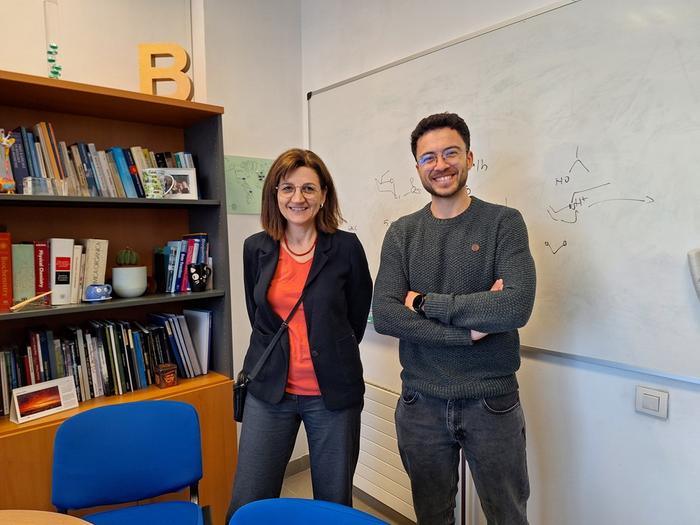An innovative study has emerged revealing the intricate biochemical mechanisms enabling the degradation of alginates derived from brown algae, offering significant implications for biotechnology. An international research cadre led by the University of Barcelona has elucidated the functioning of alginate lyases (AL), enzymes that can efficiently break down these marine polymers. Alginates, predominantly extracted from brown algae, are polyionic compounds composed of sugars that demonstrate high density and robustness, making them highly valuable in various biotechnological applications. The potential applications are vast and crucially significant in areas such as pharmaceuticals, food technology, and even environmental sustainability.
The research, which showcases a collaborative effort between experts from the University of Barcelona, the Technical University of Denmark, as well as from institutions in Norway and the United States, was recently published in the acclaimed journal Nature Communications. This collaborative study is pivotal due to the vital need for reliable mechanisms that allow for the effective utilization of these natural resources, particularly in the face of environmental challenges that call for sustainable alternatives. By unlocking the degradation pathways of alginates, the scientists have highlighted new possibilities for creating tailored alginate materials for specified functions.
The primary focus of the study revolves around alginate lyases, particularly their capacity to degrade alginates through the specific enzymatic mechanisms they employ. Understanding these molecular pathways could revolutionize the way we approach alginate-based applications, especially given the abundant extraction of these materials from marine environments each year. By dissecting the enzyme functionalities, the study suggests that alginate lyases could potentially be modified and engineered to exhibit enhanced catalytic properties, thus optimizing both efficiency and usability in various sectors.
Alginates themselves are known to vary significantly in composition in their natural state. They primarily consist of a mixture of mannuronic acid and guluronic acid, which exist in differing proportions depending on the algal source. This variability has historically posed challenges in exploiting these compounds for industry applications. However, by investigating how alginate lyases can specifically cleave the bonds between these sugar types, the research team is paving the way for the development of more uniform alginates tailored to particular needs or markets. The implications of such advancements could lead to increased efficacy in drug delivery systems, improved thickening agents for food products, and novel applications in the biomedical realm.
One of the profound insights from this study is the revelation that the action of AL enzymes occurs predominantly through a singular reaction stage, contrasting previous beliefs that proposed multiple stages. This foundational knowledge is set to reshape the scientific community’s understanding of alginate degradation. Researchers now know that during this degradation process, the alginate polymer predominantly breaks apart at its center, rather than at its terminals, which opens up new avenues for manipulating degradation processes via genetic and protein engineering strategies.
Furthermore, the study highlights the importance of computational modeling in understanding these complex biochemical reactions. The researchers utilized advanced tools like the MareNostrum 5 supercomputer based at the Barcelona Supercomputing Center, which enabled them to conduct detailed molecular dynamics simulations. These simulations provided in-depth insights at the atomic level into how alginate lyases interact with various alginate forms, allowing the identification of crucial molecular interactions that drive the enzymatic process.
In addition to revealing the action mechanisms of alginate lyases, the researchers have also identified the key residues within these enzymes that could be targeted for bioengineering. By strategically mutating specific amino acids in the enzyme’s active site, scientists believe they can enhance the efficiency and effectiveness of alginate degradation. This line of inquiry is immensely promising, as optimizing enzyme functionality will be crucial for meeting the growing industrial demand for tailored alginates.
Moreover, the study contributes significantly to the understanding of alginate’s chemical evolution during degradation. By deciphering the various stages and mechanisms of enzyme action on alginate polymers, the researchers describe how this knowledge could facilitate the design of highly selective probes. Such probes would aim to discover new alginate lyases, thus enriching the database of enzymatic tools available for biotechnology.
Not only does this study have implications for product development, but it also aligns with broader goals pertaining to sustainable practices and the utilization of natural resources more effectively. By unraveling the mechanics of alginate degradation, researchers advocate for the green economy’s growth where enzymes play a pivotal role in generating the necessary products without depleting marine ecosystems. This sustainable approach is becoming increasingly essential in light of the environmental challenges faced by society today.
The collaborative efforts under the umbrella of the Carbocentre project, funded by Synergy Grants from the European Research Council, underscore the importance of interdisciplinary research in addressing large-scale scientific problems. The scope of this work exemplifies how integrated research efforts can lead to groundbreaking revelations that may significantly impact industries reliant on alginates. As these scientists continue to unravel the complexities of polysaccharide lyases, the expectation is that new breakthroughs in enzyme engineering await, offered through a refined understanding of biochemical interactions at the molecular level.
Lastly, the visibility of this work through publication in a prestigious venue such as Nature Communications not only underscores the significance of the findings but also signals a shift in the outlook on biopolymers like alginates. The interdisciplinary nature of the work is also a testament to how global scientific collaboration can lead to transformative advancements in our understanding and utilization of natural materials.
The exploration of alginate lyase mechanisms is just the beginning. With further inquiry and development, the next few years could unveil a new frontier in biotechnology, where algae-derived products find new roles and enhance the sustainability of the industries that depend on them.
Subject of Research: Mechanisms of polysaccharide lyases in alginate degradation
Article Title: Unraveling the molecular mechanism of polysaccharide lyases for efficient alginate degradation
News Publication Date: 18-Mar-2025
Web References: https://www.nature.com/articles/s41467-025-56754-5
References: http://dx.doi.org/10.1038/s41467-025-56754-5
Image Credits: UNIVERSITY OF BARCELONA
Keywords: Alginates, Biotechnology, Marine Resources, Enzyme Engineering, Sustainability, Drug Delivery, Molecular Dynamics, Green Economy.




